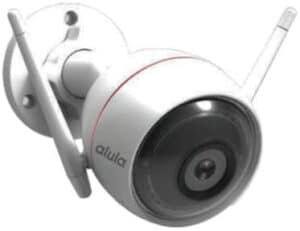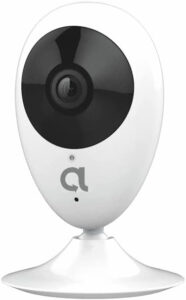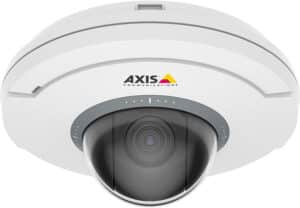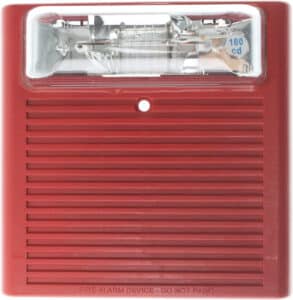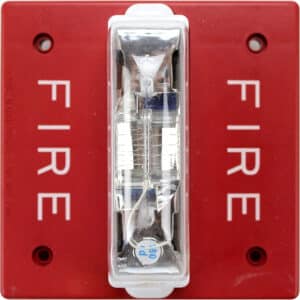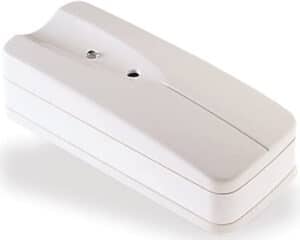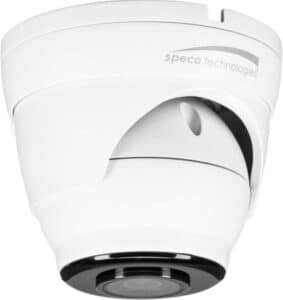Understanding the Different Types of Security Cameras and How to Choose the Right One for Your Needs
Keeping your property safe and secure is a paramount concern. Whether you want to ward off burglars, monitor your employees, or keep an eye on your kids, security cameras are an effective tool for maintaining peace of mind. However, choosing the right security cameras for your property can be a daunting task. With so many options available on the market, it’s natural to feel overwhelmed. But fret not, as we’ll walk you through everything you need to know about understanding the different types of security cameras and how to choose the right one that suits your unique needs. Read on to learn more!
Table of Contents
The Importance of Understanding the Different Types of Security Cameras
The world of surveillance cameras has evolved from the standard CCTV cameras to a myriad of high-tech, digital cameras. As the world becomes increasingly digital, so do the security cameras used to safeguard businesses and homes. Understanding the different types of security cameras is crucial to ensure you choose the right one for your needs. Most security cameras are not interchangeable, so understanding the types available helps businesses and homeowners make well-informed decisions.
CCTV cameras are the forerunners of most security cameras. They are the simplest and most affordable type of security camera. They are omnipresent and can be found in nearly every gas station, shopping mall, school, and office building. They are simple to set up and use, but their drawback is that they have little resolution, and identifying individuals captured on footage can be a real challenge. Nowadays, CCTV cameras come in different sizes and shapes, making them great options for small places lacking the sophistication required to run an advanced camera system.
IP cameras are an advanced and tech-savvy type of surveillance cameras designed for digital surveillance solutions. They are integrated with networking technologies, enabling businesses to access footage from anywhere in the world through the internet. IP cameras use high-resolution sensors and improved recording technologies, making it simple to zoom, capture images, and pan the camera. It is also possible to program IP cameras to alert security personnel when they detect suspicious activity. These cameras are best suited for high-tech-enabled businesses where security is a top priority.
The dome cameras are the most aesthetic type of security camera. They are usually mounted on ceilings, but they can also come in various sizes, shapes, and colors for indoor and outdoor use. Dome cameras provide a vast area of coverage, preventing blind spots. They are just as excellent as the IP cameras in terms of resolution, making them an excellent choice for businesses that want the best of both worlds. In general, dome cameras are best suited for discreet surveillance in places where aesthetics matter; hotels, restaurants, and high-end retail establishments prefer dome cameras.
Bullet cameras are long, cylindrical surveillance cameras that are easy to install and offer an uninterrupted view. Since they have a narrow field of view, they are best suited for areas where positioning is limited or confined, such as hallways, banks, and ATMs. Bullet cameras are waterproof and best suited for outdoor use, particularly for car parks and gardens. Their inconspicuous appearance helps maintain an unobtrusive visual presence and deter crime in the surrounding areas.
To sum it up, understanding the different types of security cameras is vital for safeguarding your business or home. Various factors, from the location to the intended purpose, should guide any classification of security cameras. Remember to strike a balance between cost, effectiveness, and features while choosing the right security camera for your needs. CCTV cameras, IP cameras, dome cameras, and bullet cameras are the four types of security cameras that can help you accomplish your security goals.
Wired vs. Wireless Security Cameras: Which is Best for Your Property?
When you’re considering security cameras, the first thing to decide is whether to go for wired or wireless cameras. Both wired cameras and wireless cameras have their own advantages and disadvantages, and the best option for your property will depend on your unique needs and situation.
Wired cameras are connected to your property using a physical cable, which provides a stable and reliable signal. This ensures that you get a clear and uninterrupted video feed. The downside of wired cameras is that they can be difficult to install, as you’ll have to run cables through your property. However, once installed, they tend to be more dependable and less vulnerable to interference compared to wireless cameras.
In contrast, wireless cameras work by transmitting their video feed via Wi-Fi or cellular connections, eliminating the need for physical cables. This makes them much easier to install, as you can place them in any location within range of your Wi-Fi network. Wireless cameras are also more adaptable, allowing you to relocate them easily if needed. However, they are more likely to be affected by signal interference and may experience connectivity problems if your Wi-Fi network is weak or unstable.
Choosing between wired and wireless security cameras depends on your specific requirements, your property layout, and your budget. If you prioritize stability and reliability, go for wired cameras. But if you value ease of installation and adaptability more, wireless cameras are the way to go.
Indoor vs. Outdoor Security Cameras: Which One is Right for Your Home?
Another crucial decision you’ll need to make when choosing security cameras is whether to opt for indoor or outdoor cameras. As the names suggest, indoor cameras are designed for use inside your property, while outdoor cameras are built to withstand the elements and monitor the exterior of your home. Both types of cameras offer unique benefits and drawbacks, and the best choice for your home will depend on your specific security needs.
Indoor security cameras are typically smaller and more discreet than their outdoor counterparts, making them less noticeable and more aesthetically pleasing inside your home. They are designed to monitor the interior of your property, keeping an eye on entry points such as doors and windows, as well as common living areas. Indoor cameras are generally more affordable than outdoor cameras and are easier to install, as they do not require weatherproofing or additional mounting equipment.
In contrast, outdoor security cameras are built to withstand the elements, featuring weatherproof and vandal-resistant casings to protect them from rain, snow, and other harsh conditions. Outdoor cameras are designed to monitor the exterior of your property, capturing footage of potential intruders, vandalism, or other suspicious activity. These cameras often come with more advanced features, such as night vision, to ensure clear footage even in low-light conditions. However, outdoor cameras tend to be more expensive and more challenging to install than indoor cameras.
When deciding between indoor and outdoor cameras, consider your specific security needs and the layout of your property. If your primary concern is monitoring the interior of your home, indoor cameras may be the best choice. However, if you want to keep an eye on the exterior of your property, outdoor cameras will provide the necessary protection and features.
Night Vision Security Cameras: How They Work and Why They’re Important
Night vision is a critical feature for many security cameras, as it allows them to capture clear footage even in low-light conditions. This can be especially important for outdoor cameras, which need to monitor your property during the nighttime hours when most burglaries and other criminal activities occur.
Night vision security cameras use infrared (IR) technology to capture clear images in low-light situations. When the ambient light levels drop below a certain threshold, the camera’s IR LEDs activate, emitting infrared light that is invisible to the human eye. The camera’s sensor then picks up this infrared light, allowing it to capture clear images even in complete darkness.
There are two primary types of night vision security cameras: infrared night vision and starlight night vision. Infrared night vision cameras rely solely on their IR LEDs to provide illumination, resulting in black-and-white footage. In contrast, starlight night vision cameras use a combination of IR LEDs and advanced image sensors to capture color footage in low-light conditions. While starlight night vision cameras typically provide higher-quality footage, they are also more expensive than their infrared counterparts.
If your property is at risk of break-ins or other criminal activity during the nighttime hours, investing in night vision security cameras is essential. These cameras can provide you with clear footage of any suspicious activity, allowing you to take appropriate action and maintain the safety and security of your property.
Pan-Tilt-Zoom (PTZ) Cameras: The Benefits and Drawbacks
Pan-Tilt-Zoom (PTZ) cameras are a versatile and powerful type of security camera that offers several unique benefits. As the name suggests, these cameras can pan (rotate horizontally), tilt (rotate vertically), and zoom (adjust their focal length) to provide comprehensive coverage of your property. This makes them an ideal choice for large or irregularly shaped areas, as well as situations where you need to monitor multiple locations simultaneously.
There are several benefits to using PTZ cameras for your security needs. First, their ability to pan, tilt, and zoom allows them to cover a much larger area than fixed cameras, reducing the number of cameras needed to monitor your property effectively. Additionally, PTZ cameras can be set to automatically track movement, ensuring that any suspicious activity is captured in detail. Finally, PTZ cameras often come with advanced features, such as high-definition video and night vision capabilities, providing clear and detailed footage.
However, there are also some drawbacks to consider when using PTZ cameras. First, they tend to be more expensive than fixed cameras due to their advanced features and capabilities. Additionally, PTZ cameras are more complex to install and set up, as they require additional wiring and configuration. Furthermore, PTZ cameras can be more challenging to operate than fixed cameras, as the operator needs to control the camera’s movements manually or set up specific automated rules.
Despite these drawbacks, PTZ cameras can be an excellent investment for larger properties or situations where comprehensive coverage is essential. They offer advanced features and capabilities that can significantly improve your security and provide clear and detailed footage of any suspicious activity.
Dome Cameras vs. Bullet Cameras: Which One is Better for You?
Dome and bullet cameras are two of the most popular types of security cameras available. Both types offer unique benefits and drawbacks, and the best choice for your property will depend on your specific needs.
Dome cameras are named for their dome-shaped casing, which makes them less noticeable and more aesthetically pleasing than other types of cameras. They are designed to be ceiling-mounted, making them ideal for indoor use. Dome cameras often come with advanced features, such as IR night vision and PTZ capabilities, providing comprehensive coverage of your property. Additionally, the dome-shaped casing makes it difficult for potential intruders to tell which direction the camera is pointing, enhancing its effectiveness as a deterrent.
On the other hand, bullet cameras are named for their long, cylindrical shape, which makes them ideal for outdoor use. They are designed to be wall-mounted, providing a clear view of your property’s exterior. Bullet cameras are often weatherproof and feature advanced features, such as IR night vision and zoom capabilities, ensuring that you can capture clear footage of any suspicious activity. Additionally, their highly visible and intimidating appearance can act as a deterrent to potential intruders.
When deciding between dome and bullet cameras, consider your specific security needs and the layout of your property. If you are primarily concerned with monitoring the interior of your property, dome cameras may be the best choice. However, if you need to monitor the exterior of your property, bullet cameras will provide the necessary protection and features.
DIY Security Camera Systems: What You Need to Know to Set One Up Successfully
If you’re interested in setting up a security camera system, you may be considering a DIY approach. DIY security camera systems can be an affordable and effective way to monitor your property, but there are several factors to consider to ensure your system is set up successfully.
First, consider the number and type of cameras you need for your property. Will you need indoor and outdoor cameras? Do you need cameras with advanced features, such as night vision or PTZ capabilities? Consider the layout of your property and the areas that require monitoring to determine the best camera placement and configuration.
Next, decide whether you want a cloud-based or local storage system for your footage. Cloud-based systems store your footage on remote servers, providing easy access from anywhere with an internet connection. Local storage systems, on the other hand, store your footage on a physical hard drive or network video recorder (NVR) located on your property. Both options have their advantages and drawbacks, so consider your specific needs and budget when making this decision.
Finally, ensure that you have the necessary equipment and tools to install your system successfully. This may include wiring, mounting hardware, and a power supply. Consider consulting with a professional installer or seeking advice from online resources to ensure that your system is set up correctly.
By taking these factors into account, you can set up a DIY security camera system that effectively monitors your property and provides the necessary protection and peace of mind.
Visit our guide to DIY security systems as we talk more and gave some tips on how to choose, install, and a lot more.
Cloud vs. Local Storage: Which is Best for Storing Your Security Camera Footage?
As mentioned earlier, one of the decisions you’ll need to make when setting up a security camera system is whether to store your footage locally or in the cloud. Both options have their advantages and drawbacks, and the best choice for your system will depend on your specific needs and circumstances.
Cloud storage is a popular option for security camera footage because it provides easy access to your footage from anywhere with an internet connection. The footage is stored on remote servers owned by the camera manufacturer or a third-party provider, with access to the footage typically provided through a mobile app or web portal. Cloud storage is often more secure than local storage, as the footage is protected by encryption and other security measures.
However, cloud storage typically comes with a monthly subscription fee, which can add up over time. Additionally, uploading footage to the cloud requires a stable and reliable internet connection, which may not be available in all situations. Finally, there may be concerns about privacy and data security when storing footage on remote servers.
In contrast, local storage stores your footage on a physical hard drive or NVR located on your property. This option provides more control over your footage, as you are not relying on third-party providers to store and protect your data. Additionally, local storage tends to be more cost-effective over time, as there are no monthly subscription fees.
However, local storage does come with some drawbacks. The footage is only accessible from the physical location of the storage device, limiting your ability to view it remotely. Additionally, local storage may be more susceptible to theft or damage, as the physical storage device can be targeted by intruders.
When deciding between cloud and local storage, consider your specific needs and budget. If you need easy access to your footage from anywhere, cloud storage may be the best choice. However, if you want more control over your data and are concerned about monthly fees, local storage may be the better option.
Smart Home Integration: How Security Cameras Can Work with Other Home Automation Technology
Smart home integration is a popular trend in home security, allowing you to control and monitor your smart security cameras through other home automation technology, such as voice assistants or smart locks. This integration can provide enhanced convenience and control over your security system, making it easier to monitor and respond to potential threats.
For example, you can integrate your security cameras with a voice assistant, such as Amazon Alexa or Google Assistant, to control your cameras using voice commands. You can also integrate your cameras with smart locks, allowing you to lock and unlock your doors remotely and view footage of anyone entering or exiting your home.
Additionally, some security cameras come with their own smart home features, such as integration with smart thermostats or lighting systems. These features can help you save energy and enhance the overall functionality of your home security system.
When considering smart home integration for your security cameras, ensure that the devices you choose are compatible with each other. Additionally, consider the potential security risks associated with connecting your devices to the internet, and take steps to secure your network and devices.
How to Choose the Right Security Cameras for Your Needs
Choosing the right security cameras for your needs may seem overwhelming, but by considering your specific security concerns and the features and capabilities of different types of cameras, you can make an informed decision.
First, consider the areas that require monitoring and the type of camera that would be best suited for each location. For example, you may want to install an indoor dome camera to monitor your living room and an outdoor bullet camera to monitor your front yard.
Next, consider the features and capabilities that are most important to you. Do you need night vision capabilities? Do you want a camera with PTZ capabilities? Consider the specific features that will enhance your security and provide the necessary protection for your property.
Finally, consider your budget and the long-term costs associated with your chosen cameras. Will you need to pay monthly cloud storage fees? Are there additional installation costs associated with certain types of cameras?
By taking these factors into account and doing your research, you can choose the right security cameras for your needs and ensure the safety and security of your property.
Conclusion
We hope that you have gained a better understanding of the different types of security cameras and how to choose the right one for your needs. Whether you are looking for a wired or wireless camera, indoor or outdoor, or one with advanced features like facial recognition and motion detection, there is a security camera out there that is perfect for you.
At Xcessory Zone, we understand how important home security is, which is why we offer a wide selection of high-quality, DIY home security products. From cameras and alarms to smart locks and video doorbells, we have everything you need to keep your home safe and secure.
Don’t wait until it’s too late to take action. Visit our website today and start browsing our selection of home security products. With Xcessory Zone, you can rest easy knowing that you and your family are protected from potential threats.
FAQs
What are the most common types of security cameras available in the market?
There are a variety of security cameras to choose from such as IP cameras, floodlight cameras, indoor cameras, analog cameras, and more.
What are the benefits of installing home security cameras?
Home security cameras provide extra protection for your property and family, increase safety, and can even act as a deterrent against potential intruders.
What is an IP camera and how does it work?
IP cameras are digital cameras that use the internet protocol (IP) to transmit footage to a network video recorder or digital video recorder. They are great for remote viewing and have high-quality video resolutions.
What is the role of the camera lens in security cameras?
Camera lenses play a crucial role in determining the field of view, image quality, and zoom capabilities of a security camera. Choosing the right lens is essential in capturing the most accurate and useful footage.
What are the key differences between analog cameras and digital video recorders?
Analog cameras transmit footage via a cable and require a digital video recorder to store footage. On the other hand, digital video recorders store footage from IP cameras and can transmit video footage via the Internet. Digital video recorders offer better video quality and greater flexibility compared to analog cameras.
Meet Our Partners!




